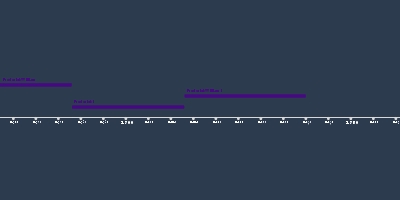The Italian Renaissance (1 gen 1420 anni – 1 gen 1600 anni)
Descrizione:
This era of art and new ways of thinking rested on the economic and political developments in the city-states of northern Italy. Due to economic growth, merchants were able to endorse art.Venice, Genoa, Milan, and Florence were the leading cities in commercial activity and were able to prosper in ventures like banking and shipbuilding. Most northern Italian cities were communes, sworn associations of free men led by members of merchant guilds. They were often politically unstable because of competing powers and unrest from the common people (called the popolo). Many cities became signori, meaning one man, often a merchant, noble, or condottieri (military leader), handed down power hereditarily. The Sforza family dominated Milan while the Medici banking family ruled Florence. Powerful people began to transform their households into courts, which allowed them to display their wealth. These city states checked each other's power and possessed great wealth and represented high cultural achievement.
People of the era recognized that they were living in a new era, yet the Italians looked towards the ancient literature and philosophy of the Greeks and Romans. Florentine Francesco Petrarch preceded the Renaissance but laid much of the groundwork by appraising the ancient Romans and pushing the idea of humanism. Humanism focused on human achievements and human nature and its potential. Giorgia Vasari was the first to use the term Renaissance, and his paintings, architecture, and The Lives of the Most Exccellent Painters, Sculptors, and Architects captures the essence of the Renaissance. Florentine city official Leonardo Bruni studied the ancients, advocated the use of Latin, argued for republicanism, and was the first to divide history into the eras of ancient, medieval, and modern. Thanks to the likes of Marsilio Ficino and Giovanni Pico della Mirandola, many Greek and Roman writings were translated. Renaissance thinkers were interested in individual excellence. Those like Leon Battista Alberti, who had many achievements in theater, architecture, science, communication and more, sought the quality of virtu, the ability to shape the world to one's will. Many agreed that educated men should be active in political affiars, an idea which became known as civic humanism. Education increased as humanists opened more schools.
Baldassare Castiglione's The Courtier aimed to mold men into the ideal gentleman who was educated and skilled. Niccolo Machiavelli's The Prince emphasized the importance of staying in power. He argued "it is safer for the prince to be feared than loved, but he ought to avoid making himself hated." It is often seen as the first modern guide to politics, although it did received criticism.
Powerful power sponsored art in a system of patronage. Creativity flourished throughout Italy, but Florence was the epicenter. Art had religious themes, but also political, personal, and classical themes. Art showed more human ideals and artists started to use geometric perspective to add depth and realism. Mannerism involved distorted figures, exaggerated musculature, and heightened color to express emotion and drama more intently. Some of the most notable personnel include Michelangelo (Sistine chapel, Statue of David, Creation of Adam), Raphael (The School of Athens), Da Vinci (The Mona Lisa, Vitruvian Man), Titian (produced portraits, religious subjects, and mythological scenes), Sanzio (painted hundreds of devotional images and became the most sought-after artist in Europe), and Brunelleschi (architect who rebuilt the church of San Lorenzo and worked on the dome of the Florence cathedral with Greek and Roman inspiration).
A debate about women's character and nature grew. Christine de Pizan became the first European woman to make a living as a writer. The debate spread widely, and also became a debate on female rulers. Gender often defined hierarchal structures.
Aggiunto al nastro di tempo:
Data:
1 gen 1420 anni
1 gen 1600 anni
~ 180 years
